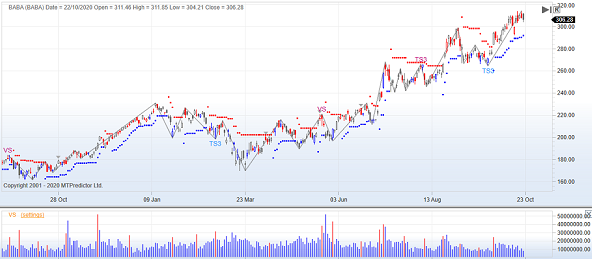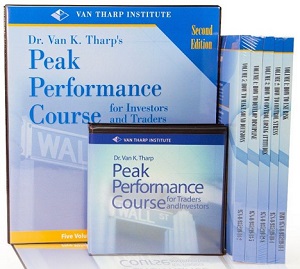
The Importance Of Volume: How Heavy Trade Sparked An ‘Open Sesame’ Moment For Alibaba By Investors Business Daily
In “Ali Baba and the Forty Thieves” the titular hero struck it rich after saying the magic words “open sesame” to gain access to a cave full of treasure.
But volume was the key to namesake stock Alibaba (BABA) generating riches of its own from a strong breakout earlier in 2020. Since passing a buy point in July, the stock has seen its price swell by more than 30%. The high volume up days, which are the hallmark of buying by institutional investors, were major reasons for its price advances.
Volume, and its relationship with price, is one of the key considerations an investor should bear in mind when deciding when to buy a stock. For a price increase to be truly meaningful, it is vital that the stock is being bought in heavy volume, because this is an important indicator of institutional buying. This is a key consideration for CAN SLIM investors.
Volume also an important indicator when a stock is falling in price. If the drop is coming in large volume it could mean your stock pick is in danger of sinking as institutions throw their shares overboard. One can be more comfortable holding onto a stock if its price is falling in light volume, however.
IBD founder William J. O’Neil said developing the ability to analyze volume is an essential ingredient to successful investing in his classic tome, “How to Make Money in Stocks.”
“Once you acquire this skill you won’t have to rely on the personal opinion of analysts and supposed experts,” he wrote. “Big volume at certain key points is indispensable.”
Distribution Volume Washes Away The Weak
Referred to by many as the “Amazon of China,” e-commerce stock Alibaba has been a market leader of late. Investors were given a chance to hop on for the magic carpet ride after it formed a cup with handle base from late January until early July (1).
Distribution, or declines in high volume, was a key feature of the base-building process. There was above-average selling at both the start and tail-end of the cup portion of the base. This was the washing away of weak investors. This process reached its peak on May 22 (2), when it sold off in volume that was 166% higher than normal on the company’s earnings report. That seemed to be a good shakeout because the stock started to recover from there.
There was still time for the stock to form a handle from June 24. A key characteristic here was below average selling (3), which suggested holders lacking conviction had already been flushed out.
Volume Sees Alibaba Stock Gains Overflow
When Alibaba stock raced above its 231.13 buy point on July 6, it was a high-conviction move. Volume came in at 70% higher than normal and 48% above average on a weekly basis (4). The rally came amid upbeat economic data from China. A negative session the next day came in volume 17% lower than usual, which suggested the bears were ready to give up the fight.
This proved to be the case. The next two sessions saw the price advance further, and in even heavier volume than its breakout day. The session with the heaviest buying saw volume surge by 97%.
The stock would consolidate before offering up a new flat base entry, and went on to advance further. But the cup with handle breakout alone netted investors a gain of 16%. It is now up around 33% for those who bought in at its July 6 entry.
Trading Education Online Courses
Peak Performance Course for Investors Traders


